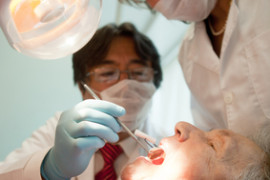A health mouth and a healthy body are strongly linked, as leading research continues to show. This is especially true regarding cardiovascular health.
A recent study published in BioMed Research International showed that periodontal inflammation and the bacteria that cause it appear to work with other heart disease risk factors—specifically high cholesterol—to contribute to atherosclerosis.
It appears from this study that oral biofilm (namely P. gingivalis and A. actinomycetemcomitans) increases atherosclerosis in association with inflammation and oxidized-LDL in ApoE (null) mice.
ApoE null mice are often used in research because they mimic humans with ApoE abnormalities. ApoE null mice (and humans with ApoE abnormalities) have been found to be more likely to have atherosclerosis, Alzheimer’s disease, and a shorter lifespan.
As the study authors mentioned, this is one study of many demonstrating a significant connection between periodontal bacteria and atherosclerosis. Previous studies have found that up to 50% of heart attacks are triggered by oral bacteria, which contribute over long periods of time to risk for heart disease.
The study authors concluded:
“The best method to prevent atherosclerosis is by blocking bacterial invasion and bacteria-induced inflammation and lipid peroxidation.”
To truly reduce the added risk of heart disease that accompanies periodontal disease, we have to address not just the traditional clinical signs of the disease, but the unseen culprits that cause it.
Traditionally, the dental profession examined periodontal disease by using a small probe to gauge pocketing and loss of periodontal ligament. While this useful tool during is still used in patient exams, this subjective method leaves a large margin for error.
We’re not just looking for bleeding gums anymore. Periodontal disease is a medical problem with a dental solution that can help prevent heart attacks and strokes. A growing number of studies are paying attention to the microbial burden, inflammatory response, and genetic variations—all key components to a modern view of periodontal disease—which are all important factors in how we address oral health in relation to overall health.



